Florida vines are the perfect vines that grow in Central Florida and South Florida gardens. Today we bring the care guides and growing habits of Florida vines beauties.
They’re not only beautiful. They also attract butterflies and many other insects and birds. Virginia creeper, Carolina jasmine, and similar other plants will full-fil your yard.
If you love shiny green leaves, that’s exactly what most vines from this region have. Fiddle-shaped and heart-shaped flowers will decorate your garden from now on.
If you’re ready for pine Flatwoods, Vitis rotundifolia, Rangoon creeper, and similar plants might be the new plants for your garden.
Below, we bring you the care guide for 9 amazing native Florida vines plants.
9 Florida Vines For Your Garden

Do you have partial sun and full sun positions in your garden? That is great! Those are exactly the things that Florida vines need. People plant more than one vine in their gardens usually.
Some of them bloom all year round and some of them are perennials that bloom all summer. Orange, yellow, and red colors with one or two leaflets will also attract wildlife into your garden.
Next summer, from their seed you might be able to propagate and multiply more of them. If this sounds interesting to you, let’s see what trees and flowers we prepared for you today.
1. Cross Vine
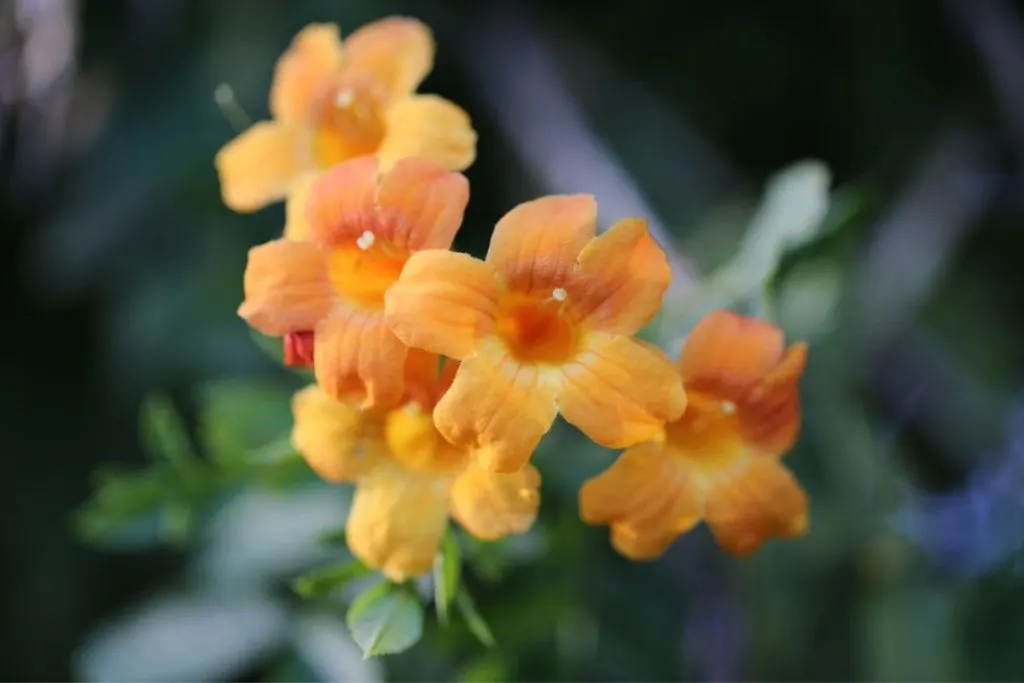
Also known as the trumpet creeper vine, this plant will completely change your garden with its yellow flowers.
The flowers have the shape of a trumpet, which is dark red in the middle and yellow around. They definitely stand out with their appearance in a garden full of flowers.
They grow best in growth zones 8 and 9. This plant is also a fast-growing Florida vine and is also native to this area.
You can mostly see it in the southeastern parts of the country. When grown with lots of love and in good condition, they can reach up to 50 feet tall.
Light needs
Cross vines require at least 6-7 hours of direct sunlight and plenty of mild light during the day. This is one of the vines that cannot grow in the shade. If you plan to plant this plant behind the house, do not do it.
In this way, you didn’t even give it a chance to try to grow, but in the beginning, you killed the conditions for the growth of this plant. If you grow it indoors or in a greenhouse, then you can also use artificial light, but at least half a foot away from the plant.
Watering Schedule
The schedule of watering this plant is very simple. Your cross vine plant needs a quarter of a gallon of water every 7-8 days. In this way, your plant will grow without any problems.
He likes rainwater the most. Some people also practice sprinklers for these plants. We advise that too, but only in the early morning hours or in the evening when there is no strong sun.
Fertilizer And Soil type
For this beautiful plant, it is best to get an organic NPK 8-5-5 fertilizer. It has all the necessary nutrients for this plant. The plant flowers in spring, so fertilize it before that, in early March or late February.
When it comes to the types of soil suitable for this plant, it prefers perlite soil combined with black soil or sometimes sand.
It does not like very acidic soils. Be guided by the fact that the pH values do not exceed 7 with this plant.
Temperature and Humidity
This beautiful plant likes high temperatures, but by no means when they exceed 70 F. Those are already tropical temperatures that this plant has a hard time coping with. That is why it is important that the air around it is moist.
We mentioned the sprinkler above. If you don’t water them during the day, move the sprinkler a few feet away from them so that they only create humidity for this plant.
Pruning And Propagation
Pruning can be done when you want to reduce or improve the appearance of this plant. If it seems to you that the plant is growing in an unusual shape that does not fit into your garden style, feel free to trim it.
But do it slowly, with sharp garden shears, and carefully. Propagation is easiest using seeds. They are obtained from flowers. You can collect them at the end of the flowering season. Store them in a dry and dark place.
2. Muscadine Grape Vine
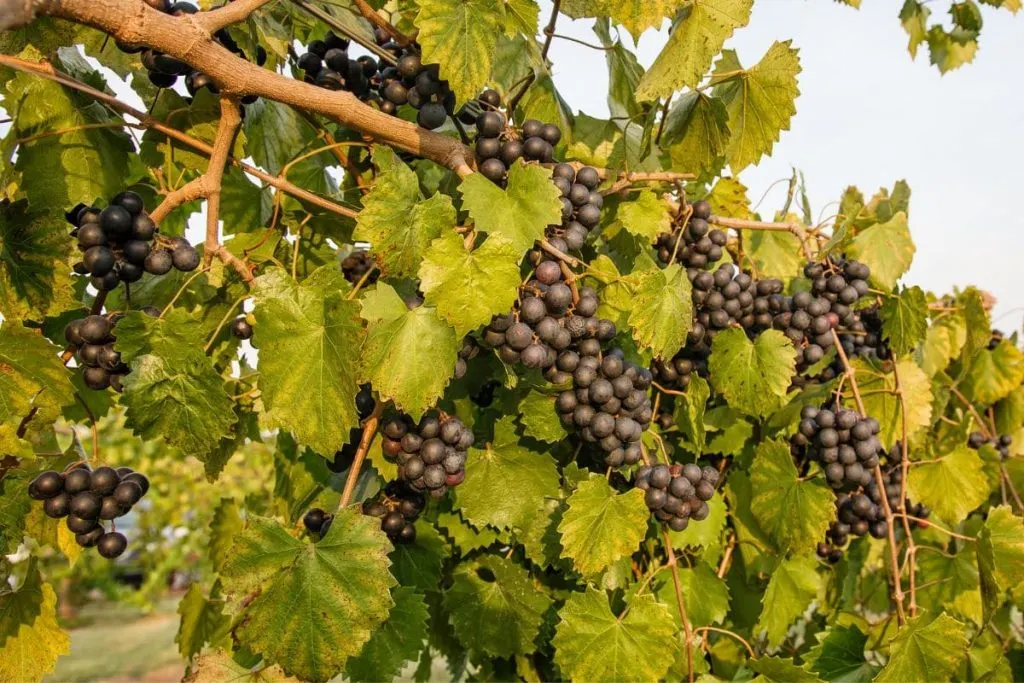
Muscadine grape vines are actually typical vines. The color of the leaves is a little darker than the leaves of the common vine, and the fruits are a little darker. Of course, the fruits are edible, tasty, and very decorative.
Like the species above, they are also characteristic of the southern parts of the country. They grow best in growing zones 8 to 10.
This plant has been cultivated throughout America since the 16th century. Its name already implies that this lovely plant comes from a grape family.
Light needs
The Muscadine grape vine grows best when it is exposed to the sun for up to 5-6 hours. Positions where there is too much shade slow down the growth of this plant.
In addition, its fruits will not be nearly as ripe and large with a lot of sun as without sun. The maturity and size of the fruits depend on the light factor. It can grow in partial shade, but only for 3-4 hours.
Watering Schedule
You can water this vine all over the plant. Both on the leaves and by fruits, and also the soil. But you need to do it in the morning before the sun rises. The type of water is not important for this plant.
A hose in the boiler, sprinkler, tap water, or rainwater, any water is welcome. The vine does not like warm water at all. So if your garden hose gets hot, wait for the hot water to flow out of it.
Fertilizer And Soil type
You can fertilize them with any organic fertilizer. We recommend good animal manure because it will do wonders for the fruits of this plant.
When it comes to soil. you can plant them in most soils that are not very acidic. Let the acidity not exceed 7.5, or even 7 of the pH value.
Temperature and Humidity
This vine and most vines thrive only in warm regions. Don’t expect this plant to grow in zones 7 or 6.
That’s too low for this plant that needs sun. And in such low-growth zones, the sun is not strong enough. Humidity should be medium, 50 and 60% humidity are ideal for the growth of this plant.
Pruning And Propagation
It is best to propagate this plant using seeds, but you can try your luck using cuttings. But then you have to monitor the growing conditions very closely because the plant is very sensitive.
Pruning can be done at the end of the flowering season, i.e. fruit picking. Prune damaged ends to encourage growth the following season.
If you are interested you can learn something more about the cheap sea grape tree with our ornamental shrub care guide.
3. Poison Ivy
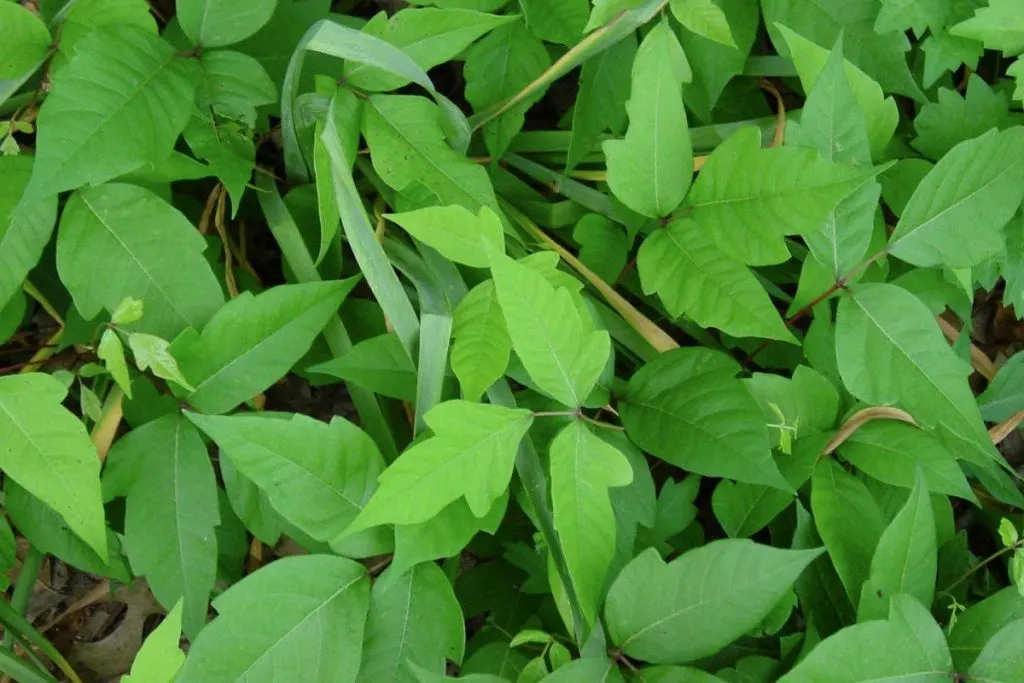
Poison ivy is a type of allergenic plant that causes redness, itching, swelling, and similar symptoms. If you were in contact with this plant and then got these symptoms, it means that the plant poisoned you.
Supplements like zinc acetate and zinc carbonate will reduce these symptoms or eliminate them completely. The plant usually has three leaves on one branch.
The leaves are arrow-shaped and green in color, turning yellow in autumn. They usually grow in forests near oak trees and sumac bushes.
Light needs
Poison ivy isn’t exactly everyone’s first choice and you’ll rarely find it in anyone’s home garden.
It mostly grows alone in the wild on the slopes of the forest next to oak trees and deciduous trees. It usually grows in partial shade with a little sun.
Watering Schedule
As we said, the plant mostly grows in the forest. This means that her watering schedule relies on rain, which can fall once or twice a month, or once every 2-3 months. But this tree still survives because its storage capabilities are such.
Fertilizer And Soil type
The poison ivy plant does not need to be fertilized. It grows by itself in the wild and therefore does not need fertilization.
The type of soil that works best with this soil is literally any type of soil except clay and sand. The plant will grow excellently in any other soil.
Temperature and Humidity
This plant grows in zones 7-10. That’s quite a high and large range for one plant, but the plant is very hardy and hardy indeed. When it comes to air humidity, you can get used to the humidity of 40% as well as 70%.
Pruning And Propagation
Pruning is not necessary for this plant. If you grow it in the garden, precisely because of its toxicity, animals avoid it just like humans.
So don’t worry about damage caused by pests. Propagation is possible using cuttings and seeds. You choose the easier way for you.
4. Coral Honeysuckle
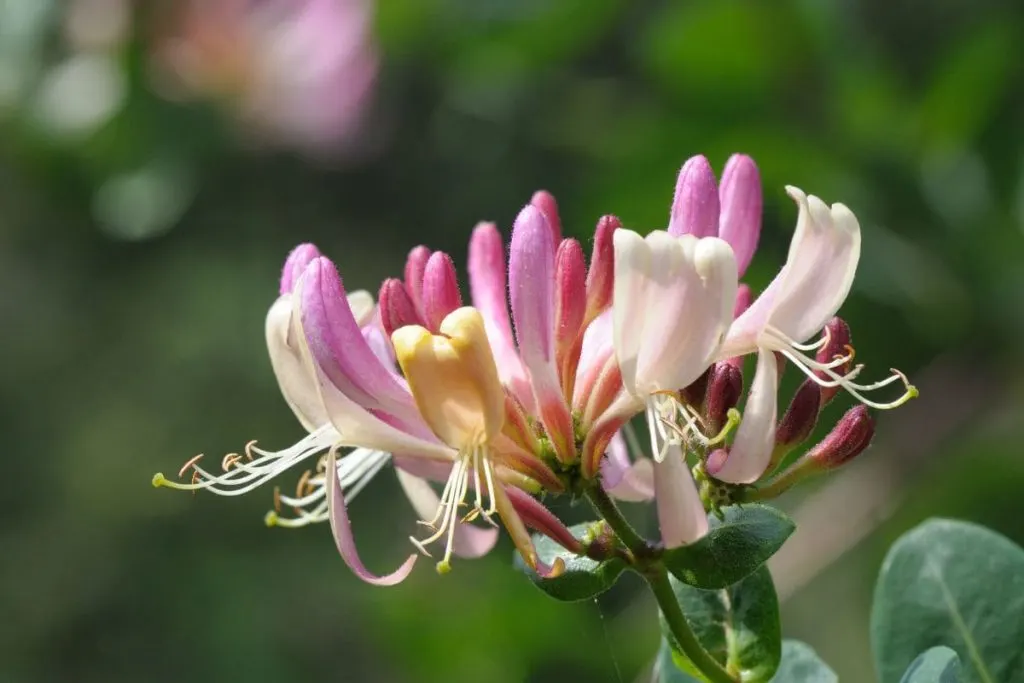
Coral honeysuckle is another trumpet-shaped flower. But this trumpet is narrower, unlike everything above.
This species also attracts ants a lot. You will have to think about these attacks as soon as you plant this plant because they like to get inside the flower and feed on its juices.
Sometimes, in addition to sucking the juice, they will also make holes in your flowers, which will cause them to dry out.
They are usually coral red in color with yellow bells hanging from the flower. They attract many small animals from the wild.
Light needs
Coral honeysuckle will thrive best in the position of full sun. It needs at least 6-7 hours of direct sun per day.
This flower doesn’t thrive well or sometimes at all in the shade position. Partial shade is tolerable for this plant, but only for 2-3 hours per day. The best position is on the east side of the house.
Watering Schedule
The watering schedule is very simple for this plant. A third of a gallon every 7 days and your plant will grow contentedly and happily.
In other conditions, the plant will not be very happy wherever you put it. It’s best to use rainwater for this garden plant.
Fertilizer And Soil type
The plant does not need to be fertilized. But some people still do it before flowering. If you really want to improve your plant, do it with a 10-15-10 fertilizer in early spring before this plant flowers.
Any soil type is good as long as you’re not crossing the pH value over 6.5. this plant doesn’t like acidic soils.
Temperature and Humidity
The plant is characteristic of warm regions and will grow best in temperatures between 55 and 70 F.
It does not tolerate cold well, especially frost. He can die in such conditions very quickly. Humidity can be between 40 and 70% for the plant to grow smoothly.
Pruning And Propagation
Pruning of this plant is not necessary. When it comes to propagation, semi-cuttings and using seeds are two popular methods.
You can choose an easier and faster way for you. Keep the seeds in a dark and dry place before planting.
5. Climbing Aster
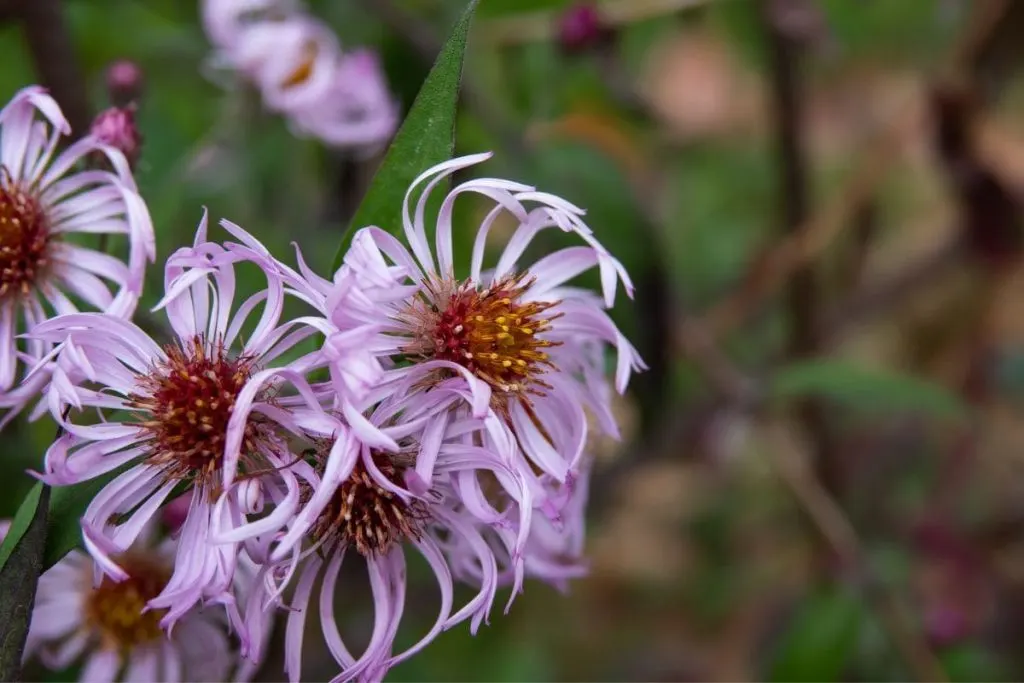
This beautiful climbing plant is known for its tiny violet flowers. It is a daisy type of flower that is a perennial plant. The aster is good for beach gardening.
The plant is characteristic of the southern part of America and originally originates from this continent.
It has a woody stem but is very thin and brittle. If you plant it where there is a lot of wind, this climber could soon be destroyed.
Attracts butterflies, hummingbirds, and bees. When grown in the best conditions it can grow up to 5 feet tall outdoors.
Light needs
What most climbing plants need is lots and lots of light and sun. Certainly much more than other plants.
These plants draw all their energy from sunlight. In order for them to grow well and healthily, give them at least 7-8 hours of sun. One side of the fence will have less developed flowers precisely because of the sun.
Watering Schedule
The watering schedule for this plant is very simple. Once every 7 days with a third of a gallon of water.
During the flowering period, you can reduce to a fifth of a gallon of water, but every 5 days. This will be extremely important for your plant.
Fertilizer And Soil type
When it comes to fertilizer, use a 10-10-10 fertilizer or any fertilizer for your houseplants. You can even apply animal manure. It thrives best in well-drained soil such as sandy soil, peat moss, or perlite soil.
Temperature and Humidity
When we say that a plant is native to South America or, for example, Florida, you immediately know that it likes high temperatures.
It is the same with this plant. Rarely, very rarely will it succeed in hardy zones below 7. Air humidity is not that important for this plant.
Pruning And Propagation
Pruning this plant is not necessary except in cases of damage to the plant. Then react quickly and immediately. It is best to propagate it using seeds. This has proven to be the most successful way for this plant.
6. Passion Vine
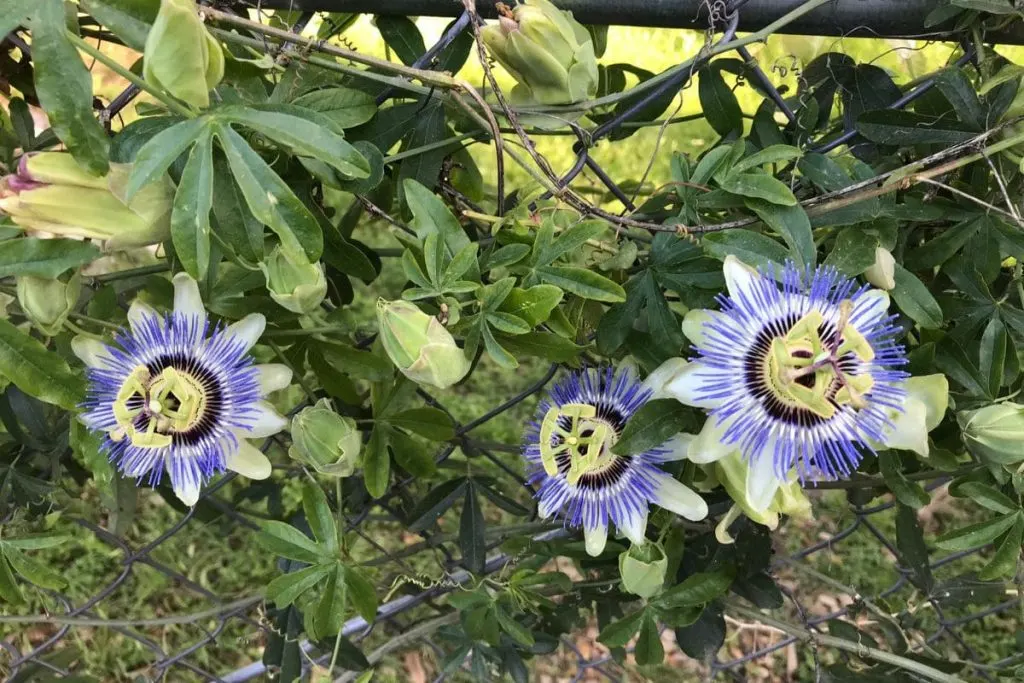
The passion vine is a beautiful purple plant with tiny white bells in the center of the flower on the pistil.
In that part, the seeds remain afterward, which serves to spread the seeds. The flower does not grow only in this color.
You can also see it in purple, white, red, and blue. This genus has as many as 550 species of various colors, shapes, and sizes.
What is interesting about this flower is that it only stays open for one day. Although you will only enjoy the flower for one day, that day will be enough.
Light needs
This beautiful plant needs at least 5 hours of direct sunlight to thrive. Its ability to grow is also reduced in partial shade. The sun suits your plant best, full sun during the day.
Watering Schedule
Water it with a quarter of a gallon of water during the flowering period every 6 days and during other parts of the year every 7-8 days with a third of a gallon of water. Practice rainwater.
Fertilizer And Soil type
You can fertilize the plant with 10-10-15 fertilizers in spring and late summer, never in autumn and winter.
Especially winter during its dormancy period. Any type of soil that is not too acidic suits it. Let the final upper value of soil acidity be 7.5 of the pH value.
Temperature and Humidity
Hot summer temperatures suit this plant best. You can tolerate 50 F, but that temperature will be very noticeable in the appearance of your plant. The average air humidity of this region suits her best, which is about 65-70%.
Pruning And Propagation
Pruning can be done at the end of the flowering season. Make it at a 45-degree angle with a sharp knife or scissors. Only trim the ends of the stems. The best way to propagate is by seed.
7. Herbaceous Vine
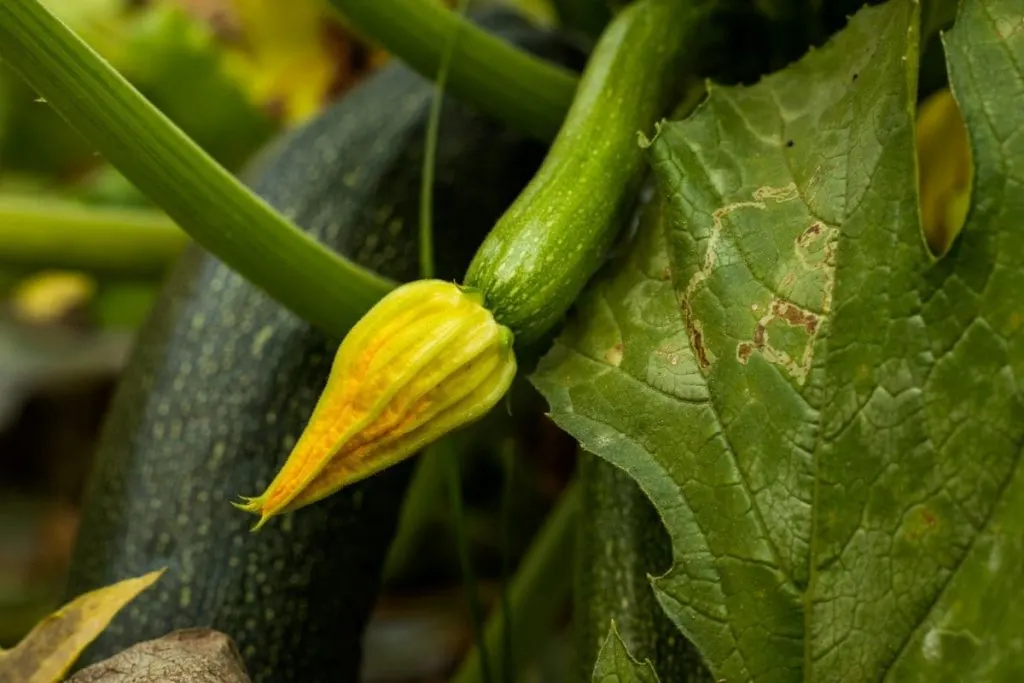
If you want the closest description of this plant, then it’s safe to say that it looks a lot like a nettle. Its appearance is very simple, it has no flowers, and the leaves are dark green and arrow-shaped.
It usually grows in the form of a bush (shallow bush). When growing in good conditions, it grows several feet a year. Their stems are not wooden and are very fragile and brittle.
Just like those stems that, for example, nettle plants have. They die just before winter and then start their growth process all over again from the beginning of spring.
Light needs
Light conditions for this plant can be full shade, partial shade as well as full sun. These types of vines will adapt to any form of light very quickly. They don’t have flowers and that’s why they are more hardy types of vines.
Watering Schedule
The watering schedule of these plants is anything but difficult. You can water them every 7 days for a glowing result, and every 12 days for a slightly less glowing result because they are drought-tolerant plants.
Fertilizer And Soil type
Any type of soil will suit this plant as long as it is not acidic. Let the acidity of the soil not exceed 7 of the ph value. It is not necessary to fertilize them.
Temperature and Humidity
Temperature and humidity are also more or less unimportant for this plant. It has no flowers, it is more resistant than other plants because it is self-sprouting and quickly gets used to various conditions.
Pruning And Propagation
Pruning is not necessary, and it is best to propagate it using seeds. Propagation by cuttings is not really desirable because the plant does not have woody stems, which are ideal for this.
8. Carolina Jessamine
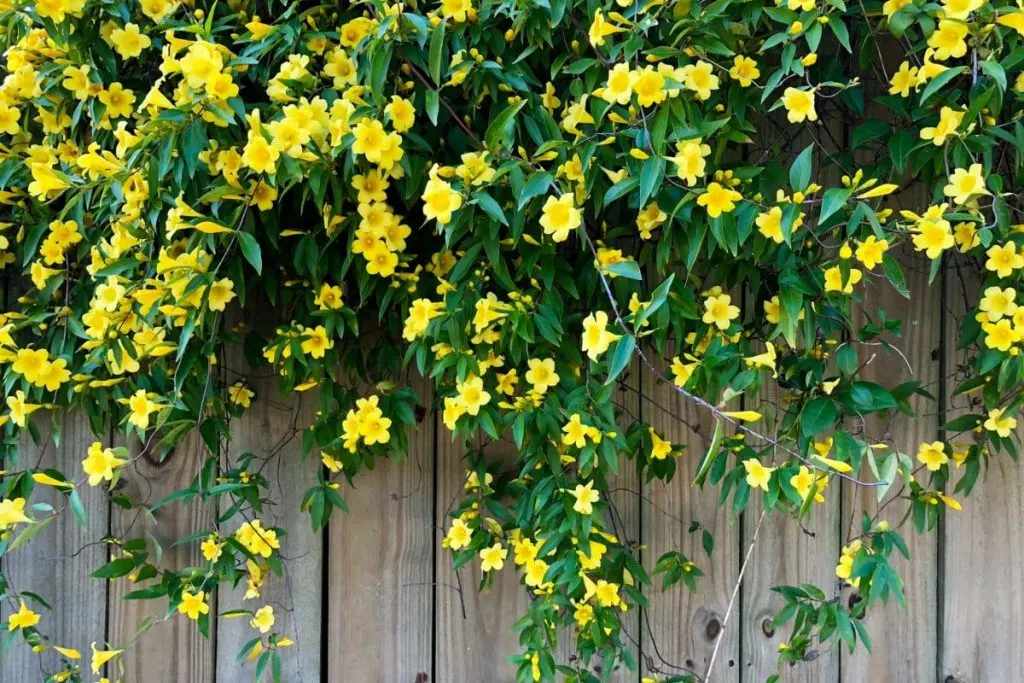
Also called yellow jasmine, the Carolina jessamine plant will bring life and color to your garden! Its extremely strong yellow leaves are very impressive and have a specific shape.
They strongly resemble the daffodil plant, which is one of the favorite flowers for Virgo, flowers for Gemini, and Aries flowers as well.
People mostly plant it next to the fence because it climbs up along it, and when it reaches the height of the fence, the flowers and stems cross over to the other side of the fence, enveloping it completely. They grow the best in hardy zones 7-10.
Light needs
The jasmine plant is very sensitive to light, so expose it to the sun for only 2-3 hours. In different conditions, it will quickly wither due to too much sun. Provide it with lots of bright light for the rest of the day.
Watering Schedule
Water this amazing plant once a week in the morning hours with rainwater or tapwater. A third of a gallon is more than enough to feed your plant with enough water for a period of 7 days.
Fertilizer And Soil type
The plant is not picky when it comes to soil. Combine peat soil with sandy soil and you have a winning soil combination. You can fertilize them with a classic fertilizer for house plants.
Temperature and Humidity
The temperature and humidity are the best as long as they are in ratio to the average temperature of this region. So these are temperatures between 65 and 75 F. The plant does not like frost and cold at all.
Pruning And Propagation
Pruning the plant is not necessary. Maybe sometimes the leaves will turn yellow from the sun, so you can carefully prune them. Propagate by seed for best success.
9. Morning Glory
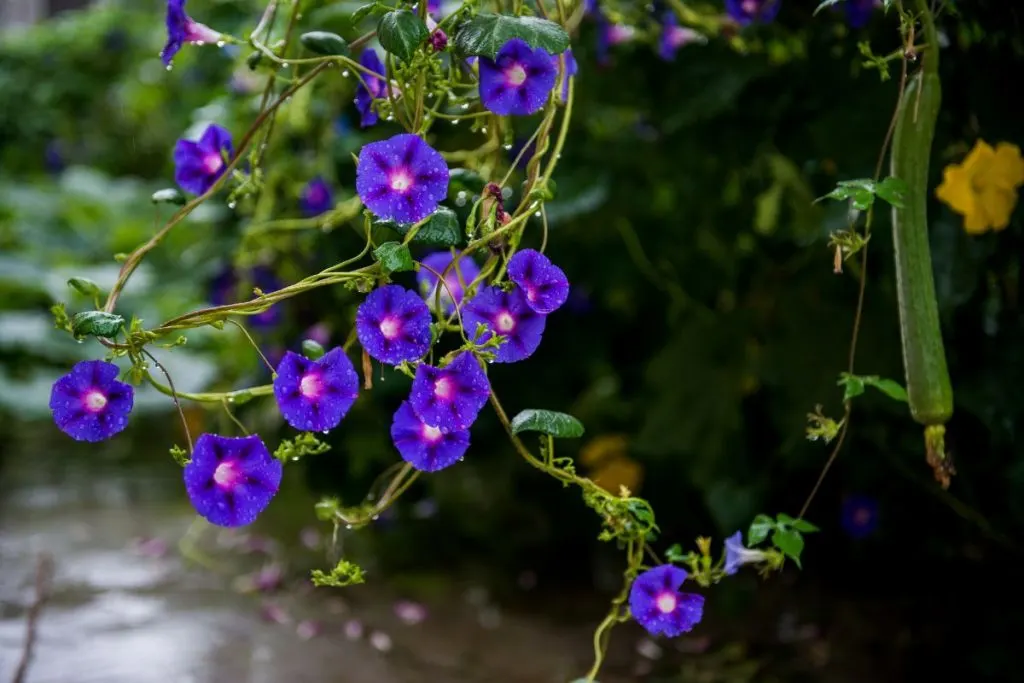
The morning glory family has around 1800 different species. They’re characteristic of the south Florida region. You can read about more south Florida butterfly plants on our site. Easily propagated from winged seeds morning glory will be your new favorite garden plant.
Morning Glory is a perennial vine and female vine. This flower is among butterfly species. On its upper leaf surface, you’ll see hummingbirds and butterflies very often. Heart-shaped leaf shape won’t leave anyone uninterested. Flowers grow and bloom in early spring.
Light needs
The plant grows best when it has 5-6 hours of sun. It doesn’t like the shade and doesn’t expect it to make much progress in such conditions. In the shade, it will have slow growth.
Watering Schedule
Water this plant once every 7-8 days with rainwater. It takes a third of a gallon of water to fully feed the plant. It doesn’t like tap water much or warm water.
Fertilizer And Soil type
The plant doesn’t have to be fertilized. It is one of the low-maintenance plants for Arizona. The soil type this plant prefers the most is perlite soil. In such soil that’s well-drained, it will thrive happily and healthily.
Temperature and Humidity
This plant likes very high temperatures and will not grow in regions with temperatures below 55 F. The ideal ratio is between 65 and 70 F. Humidity can be between 50 and 70%.
Pruning And Propagation
Pruning of this plant is not necessary except in case of damage. Propagation is done using cuttings and seeds. A more effective way is seed propagation.
What Is The Invasive Vine In Florida?
If you wanted to plan them, you should definitely know this information before you decide on such a step. Noninvasive species are poison ivy and muscadine grapevine.
What Is A Fast-growing Vine In Florida?
They grow 2 inches per year. If you want to spot a fast difference in your garden we advise you to buy these vines. They are both native to Florida as well.
Wrapping Up

How did you like our article about Florida vines? If you enjoyed some of our previous articles about flowering trees yellow and trees with purple flowers, you probably loved this one as well. Smilax bona nox, compound leaves of Carolina jasmine, what’s your choice?
What’s there not to like? Perfectly shaped leaves and colorful flowers make these flowers and trees very desirable for any garden.
If you, however, don’t like any of these, your garden will surely appreciate some of the ground covers with yellow flowers.
That would be all for today, see you tomorrow with similar articles.

